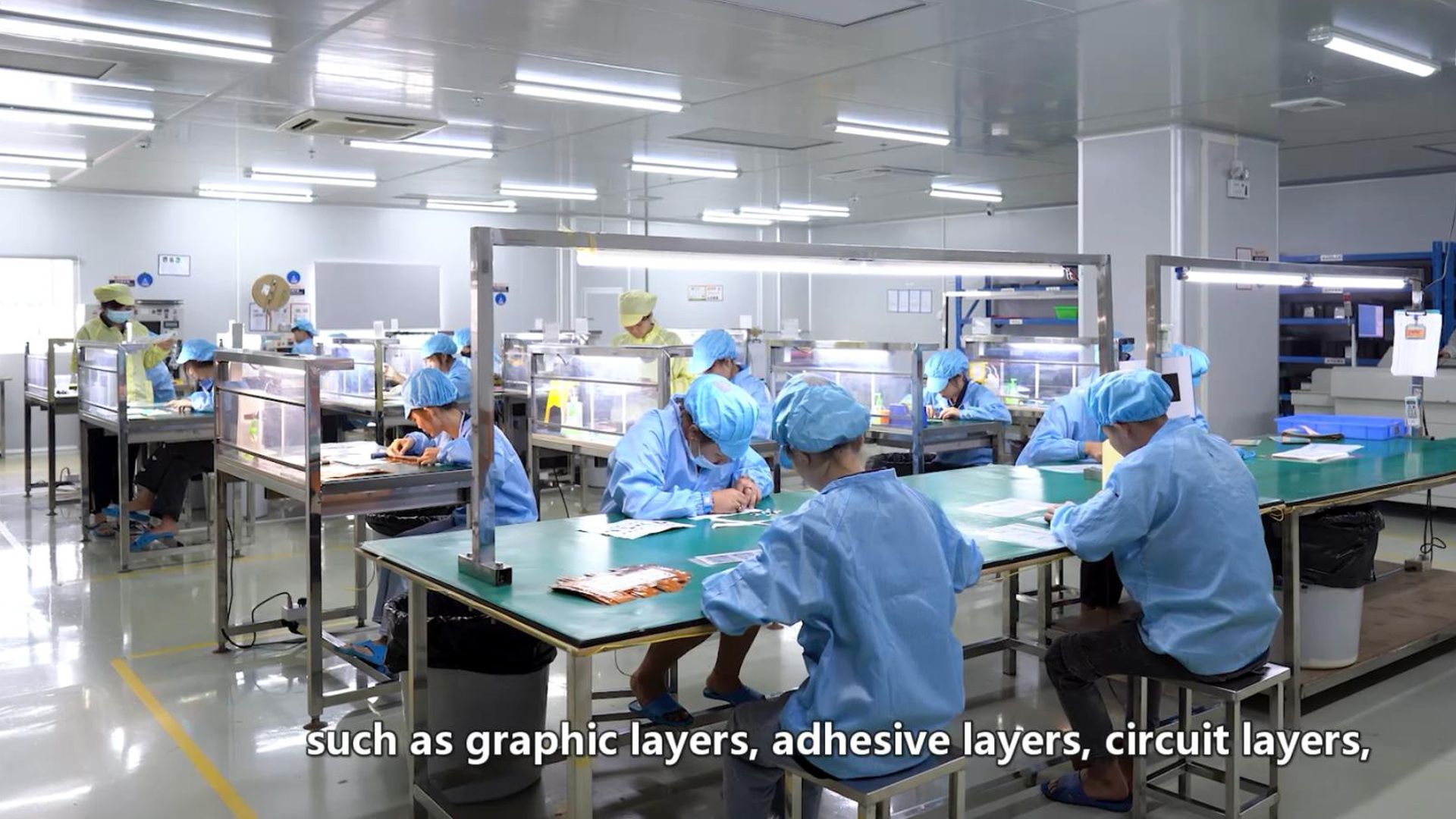One, the panel layer:The panel layer is generally made of exquisite patterns and text printed on colorless transparent sheet materials such as PET, PC, etc. less than 0.25MM. Because the main function of the panel layer is to play the role of identification and keys, the selected material must have high transparency , High ink adhesion, high elasticity, high toughness and other characteristics.
Second, the surface adhesive layer:The main function of the surface glue is to closely connect the panel layer and the circuit layer to achieve the effect of sealing and connection. The thickness of this layer is generally required to be between 0.05 and 0.15 mm, with high viscosity and anti-aging properties; in production , Generally, special membrane switch double-sided adhesive is used. Some membrane switches require waterproof and high temperature resistance. Therefore, the surface adhesive uses materials of different properties according to needs.
Three, the upper and lower layers of the control circuit:This layer uses polyester film (PET) with good performance as the carrier of the switch circuit pattern and uses a special process to silk-screen conductive silver paste and conductive carbon paste to make it conductive, and its thickness is generally 0.05– Within 0.175MM, 0.125MM PET is commonly used.
Four, laminated layer:It is located between the upper circuit and the lower circuit layer and plays the role of sealing and connecting. Generally, PET double-sided tape is used, and its thickness ranges from 0.05 to 0.2MM; when choosing the material of this layer, full consideration should be given to the overall product Thickness, insulation, feel and tightness of the circuit key package.
Five, back adhesive layer:The use of adhesive is closely related to what material the membrane switch is attached to. Common double-sided adhesives, 3M adhesives, waterproof adhesives, etc. are commonly used.

Membrane switches are classified by structure:
1) Plane type non-touch type:
Long service life, but no tactile feeling;
2) Film convex touch type:
has a good touch, but the service life is relatively short;
3) Convex frame type non-touch type:
The appearance is beautiful, with a strong three-dimensional effect, but no touch;
4) Convex frame touch type:
has a beautiful appearance, a strong three-dimensional effect, and a touch;
5) Convex touch type:
(A) type: improperly designed, it is easy to have two-stage phenomenon, but the panel is damaged, and the electrical performance also exists;
(B) type: There is no two-stage phenomenon, and there are few structural layers, which is more economical. If the panel is damaged, the electrical performance will not exist;
6) Metal shrapnel type:
(A) type: It is a basic and commonly used structure. The shrapnel not only plays the role of touch but also plays the role of wiring;
(B) type: complex structure, used in occasions where there are more and dense shrapnel and no jumpers are required. The shrapnel is placed on the upper circuit, the conductive surfaces of the upper and lower circuits are upward, and the upper circuit needs to be punched. When this structure is turned on, the four feet of the shrapnel are not on the same plane as the center point, and there are “two stages”. At the same time, the shrapnel is often in a strong state of excessive anti-concave. After a long time, the shrapnel will not rebound. It is not recommended;
(C) type: The shrapnel is placed on the upper circuit, which only has a tactile effect. The conductive surface of the upper circuit is downward, and the conductive surface of the lower circuit is upward. There are “two sections”, and it is not recommended;
(d) Type: The shrapnel is placed on the lower line. Both the upper and lower lines are routed. The shrapnel not only plays the role of touch but also connects the upper and lower lines; it is used for more shrapnel, denser and no jumps. In the case of wire, the structure is simpler than that of type (b). When designing, pay attention to the line routing to avoid the four legs of the shrapnel to ensure that there is no short circuit.
7) Luminous body type: The bottom plastic mold must be opened;
(a) The LED circuit is on the same layer as the lower circuit: the structure is simple, but if the height of the selected LED lamp is higher, the LED lamp will lift the panel. At this time, the LED window on the panel should be embossed, or the surface glue layer should be thickened The thickness is greater than the thickness of the LED lamp;
(B) The LED circuit and the lower circuit have different layers: the structure is complex, but the LED window does not have to be convex, but the area above the LED lamp must be hollowed out to prevent light from not passing through the LED lamp hole. Note: At this time, when wiring down the line, avoid the wiring around the LED light hole.
8) Fold in half:
This type can avoid jumper wires and can make the conductive surface down without filling holes. The disadvantage of this structure is that the circuit is easy to break at the half-fold.
9) Waterproof type of inner and outer frame:
The outer frame is a closed frame without wires, which protects the inner frame and prevents moisture from entering the case from the outlet groove.
Welcome customers to visit and negotiate business
